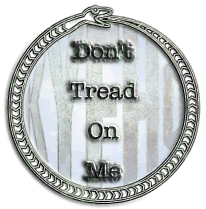Eight
❝❝Here’s the real point, though. Eight is plenty. In fact, it may just be perfect. For the Supreme Court to take action, there needs to be a clear mandate. That’s an opinion, but it’s one that should make sense to any Constitutional conservative. With nine (or any odd number of) justices, actions for or against a ruling are essentially mandated automatically. That’s not how it should be. With eight, particularly if the justices are split between “conservative” and “liberal” ideologies, a true mandate would require that at least one justice changes sides.❞❞
— JD Rucker, Eight is enough… justices
Stars above and Earth below, I wish I’d thought of that!
It follows with my Four amendments post. The default should be no action without a clear mandate. There is absolutely no reason why each case should be decided one way or the other. Liberty demands more than black and white! Justice over process!
I love when my personal beliefs are verified by someone else’s logic coming from a different direction.
Addendum: Although I did not put this specific post up on reddit, I did put the original link. Someone pointed out that the U.S. Code does specify a Chief Justice and eight associate justices. I think that falls back to the assumptions that I pointed out in my Four amendments post. Just as electing someone shouldn’t be the default, having the court make a decision shouldn’t be the default. Government should be the last solution, not the first, third, fifth, sixth, and last.
Addendum 2: From the official history with emphasis added by me.
The Supreme Court of the United States and the Federal Judiciary❝❝Article III of the Constitution places the judicial power of the federal government in "one supreme Court, and in such inferior Courts" as the Congress might decide to establish. The Constitution grants the Supreme Court original jurisdiction in cases in which states are a party and those involving diplomats, but leaves for Congress to determine the size and responsibilities of the Court that is the capstone of the federal judiciary. The Judiciary Act of 1789 established a Supreme Court with one chief justice and five associate justices. The act further defined the jurisdiction of the Supreme Court to include appellate jurisdiction in larger civil cases and cases in which state courts ruled on federal statutes. Congress required the justices of the Supreme Court to preside with the local federal judges on the U.S. circuit courts that met in judicial districts throughout the nation, thus insuring that members of the highest court would participate in the principal trial courts of the federal judiciary and be familiar with the procedures of the state courts.
The size of the Supreme Court grew to accommodate the establishment of new circuits as the nation expanded. In 1807 a seventh justice was added to the court, and in 1837 an eighth and ninth justice joined the Supreme Court. The size of the Court reached its highest point in 1863 with the creation of a Tenth Circuit on the west coast and the appointment of a tenth justice. In 1866, Congress reduced the size of the Court to seven justices and provided that no vacant seats be filled until that number was reached. The number of sitting justices fell to eight before an act of 1869 provided for nine justices, one for each of the judicial circuits established in 1866. The size of the Court has since remained the same.
The duties of circuit riding required the Supreme Court justices to spend most of their time traveling and prompted recurrent efforts to reduce or eliminate this responsibility. In 1793, Congress reduced the number of justices required to hold circuit court from two to one. In the Judiciary Act of 1801, Congress created separate circuit judgeships and freed the justices from any circuit court duties, but this exemption was short-lived. In 1802 Congress again assigned the justices to serve on the U.S. circuit courts, although it allowed the district judge to preside alone in some instances. The establishment of separate circuit judgeships in 1869 further relieved the circuit obligations of the justices. When Congress abolished the circuit courts in 1911, it finally made the justices’ circuit duty optional.❞❞
The actual number is up to Congress and it has been both odd and even. Interesting. I’ve learned some good things today.

The size of the Supreme Court grew to accommodate the establishment of new circuits as the nation expanded. In 1807 a seventh justice was added to the court, and in 1837 an eighth and ninth justice joined the Supreme Court. The size of the Court reached its highest point in 1863 with the creation of a Tenth Circuit on the west coast and the appointment of a tenth justice. In 1866, Congress reduced the size of the Court to seven justices and provided that no vacant seats be filled until that number was reached. The number of sitting justices fell to eight before an act of 1869 provided for nine justices, one for each of the judicial circuits established in 1866. The size of the Court has since remained the same.
The duties of circuit riding required the Supreme Court justices to spend most of their time traveling and prompted recurrent efforts to reduce or eliminate this responsibility. In 1793, Congress reduced the number of justices required to hold circuit court from two to one. In the Judiciary Act of 1801, Congress created separate circuit judgeships and freed the justices from any circuit court duties, but this exemption was short-lived. In 1802 Congress again assigned the justices to serve on the U.S. circuit courts, although it allowed the district judge to preside alone in some instances. The establishment of separate circuit judgeships in 1869 further relieved the circuit obligations of the justices. When Congress abolished the circuit courts in 1911, it finally made the justices’ circuit duty optional.❞❞








